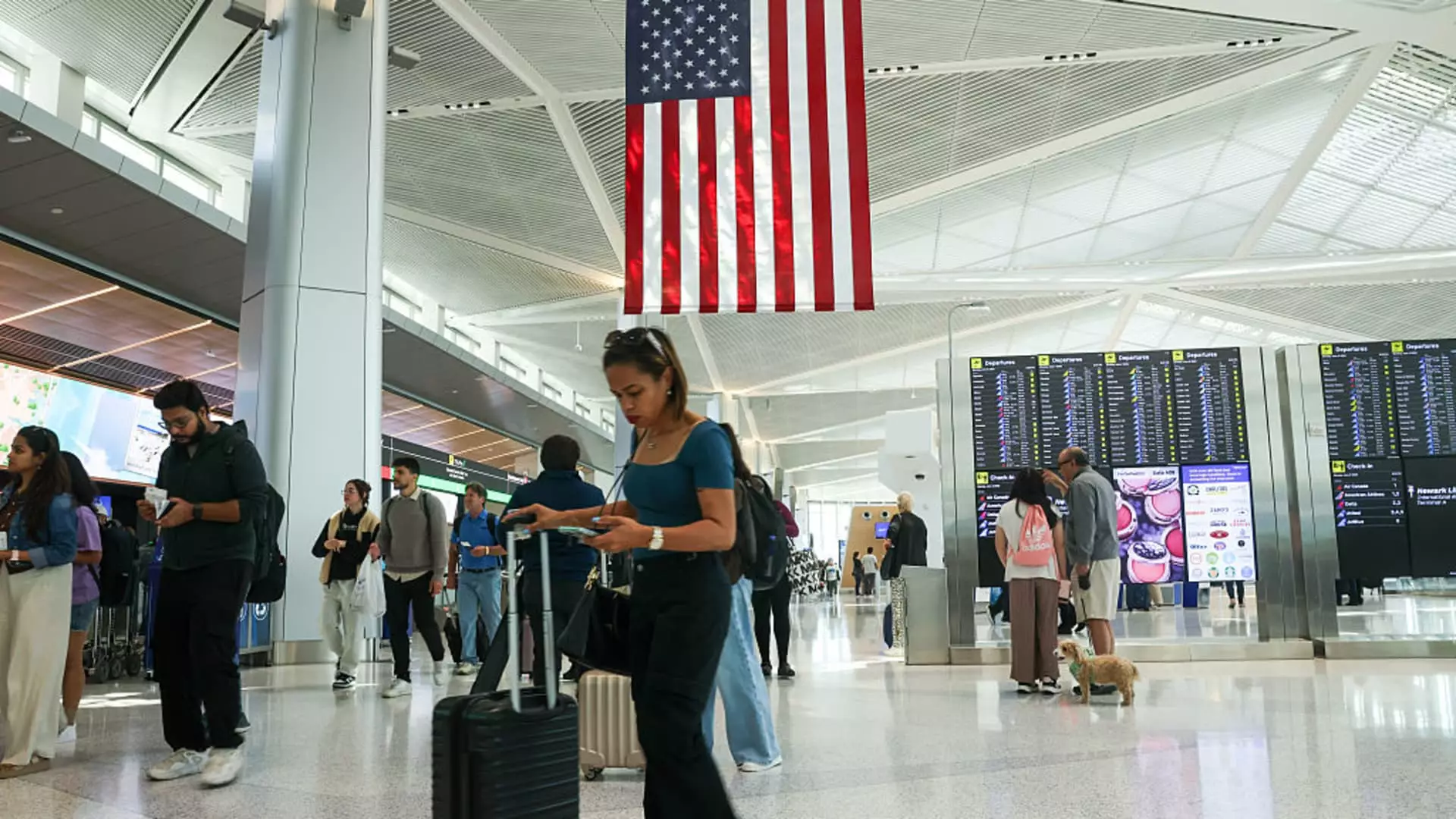For years, the airline industry projected a robust recovery as post-pandemic travel rebounded, but what we see today is a sobering reality check. While headlines trumpet lower fares and record-breaking summer crowds, these are but fleeting illusions masking an underlying fragility. The recent drop in domestic airfares—down 3% from last year to an average of $265 round-trip—may appear as good news for travelers, but it signals a more troubling story of overcapacity and insufficient demand. Airlines, eager to fill seats, have resorted to aggressive discounting, essentially putting their revenue streams on sale to attract passengers. This “summer sale” mentality reflects a desperate attempt to spur activity at a time when economic uncertainties and geopolitical tensions have sapped consumer confidence and discretionary spending. Lower fares are not an indication of health; they are symptomatic of an industry trying to survive in a landscape flooded with seats but starved of paying customers.
Uncertain Horizons: The Business of Flying in a Volatile Economy
The future of aviation remains clouded in doubt. Major carriers like Delta, American, and Alaska Airlines have already pulled back on their forecasts for 2025, citing unpredictable economic conditions and external pressures such as tariffs that threaten profitability. What was once a predictable cycle of profit peaks in the second and third quarters is now unpredictable as airlines grapple with fluctuating demand. While airlines have announced cutbacks on unprofitable routes—particularly during off-peak travel periods—the expected holiday surge still failed to meet optimistic projections. The actual numbers tell a sobering story: despite an influx of over 18.5 million travelers predicted by the TSA, no single day has demonstrated the kind of overwhelming demand that would suggest a strong full recovery. Instead, what emerges is a pattern of tepid interest, with demand failing to rebound to pre-pandemic levels despite the easing of some travel restrictions and the resumption of international trips.
The Myth of Resilience: Why Industry Optimism Is Misplaced
Economic indicators paint a surprising picture. U.S. jobs data beat expectations, yet consumer spending—particularly on air travel—continues to decline. An 11.8% drop in air travel-related spending in June, as recorded by Bank of America, reveals the disconnect between headline employment figures and actual discretionary expenditure. This dissonance suggests that consumers, even with job stability, remain cautious, unsure whether to commit to costly travel plans that may not be worth the financial risk. Despite the resilience shown in the broader macroeconomic environment, the airline industry’s demand has remained remarkably tepid. This lack of enthusiasm among travelers is compounded by the fact that airlines are not yet seeing the hoped-for uptick in capacity utilization. Instead, many carriers have announced plans to pare down flights further, especially in periods when demand is expected to wane. The persistent overcapacity, mirrored in lower fares and hesitant bookings, points to a fundamental misjudgment: the post-pandemic travel surge was overestimated, and the industry now faces the long, painful process of adjusting to diminished demand.
International Travel: A Bright Spot or Illusion?
The international segment remains one of the few visible bright spots—yet even here, the outlook is less promising than it seems. Although international departures from the U.S. increased modestly by 4.3%, fares are falling sharply. Travelers heading to Europe now pay an average of $817, nearly $100 less than last year and on par with pre-pandemic levels. While this could initially seem like a win for consumers, it’s more likely a sign of fierce competition among airlines trying to fill empty seats. Similarly, flights to Asia have seen a 13% reduction in fares, a clear indicator that even foreign destinations are not immune to the overall malaise. Lower prices on international flights might temporarily boost traffic, but they raise uncomfortable questions about profitability and long-term industry sustainability. Ultimately, the international travel boom relies heavily on a fragile economic recovery, with geopolitical tensions and inflationary pressures threatening to derail what little momentum exists.
The current state of the airline industry exposes a sobering truth: the much-hyped recovery was largely a mirage. Airlines have overbuilt, overdiscounted, and underestimated the lingering economic hesitations. The seemingly positive indicators—lower fares, stable job figures, slight increases in international travel—mask a more fundamental issue: demand is weak, and capacity remains excessive. Until the industry confronts its overcapacity problem and consumers regain confidence to spend freely on travel, the era of easy profits and rapid growth remains firmly out of reach. The potential for a sustained and robust recovery hinges on much more than fare drops and optimistic forecasts; it demands honest acknowledgment of structural vulnerabilities and a willingness to adapt to a new, more cautious travel landscape.

